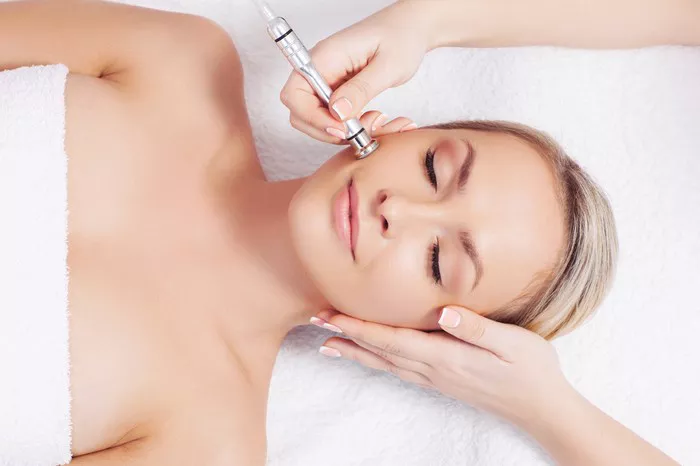Microdermabrasion is a cosmetic procedure that involves the use of a handheld device to exfoliate the top layer of skin. This treatment is often used to improve the appearance of fine lines, acne scars, and sun damage. While microdermabrasion is a relatively gentle treatment, patients often wonder how often they can safely undergo this procedure. In this article, we’ll explore the various factors that influence how often you can undergo microdermabrasion, what to expect during the treatment, and tips for ensuring the best possible results.
Factors that influence frequency of microdermabrasion
The frequency with which you can safely undergo microdermabrasion will depend on several factors, including:
- Skin type: Patients with oily skin may be able to tolerate more frequent treatments than those with dry or sensitive skin.
- Skin condition: Patients with severe acne or rosacea may need to avoid microdermabrasion altogether or limit their treatments to once every few months.
- Treatment area: The skin on the face is more delicate than the skin on the body, so patients may need to space out facial treatments more than treatments on other parts of the body.
- Treatment intensity: The intensity of the microdermabrasion treatment can vary depending on the device used and the pressure applied. More intense treatments may require longer periods between sessions.
Recommended frequency of microdermabrasion
The recommended frequency of microdermabrasion will vary depending on the factors listed above and the specific needs of each patient. However, as a general rule, most patients can safely undergo microdermabrasion once every two to four weeks.
For patients who are using microdermabrasion to address specific skin concerns, such as fine lines or acne scars, a series of treatments may be recommended. This may involve weekly or bi-weekly treatments for a period of four to six weeks, followed by maintenance treatments every four to six weeks thereafter.
What to expect during microdermabrasion
Microdermabrasion is a relatively simple and painless procedure that can be performed in a dermatologist’s office or med spa. Here’s what you can expect during a typical microdermabrasion treatment:
- Cleansing: The treatment area will be cleansed to remove any makeup, dirt, or oil.
- Exfoliation: A handheld device will be used to gently exfoliate the top layer of skin. This may involve the use of crystals, diamonds, or a combination of the two.
- Suction: The device will also use suction to remove the dead skin cells and crystals from the skin’s surface.
- Moisturizing: After the treatment, a moisturizer or sunscreen may be applied to soothe the skin and protect it from the sun.
The entire treatment usually takes between 30 minutes to an hour, depending on the size of the treatment area.
Tips for ensuring the best results
To get the most out of your microdermabrasion treatments, here are some tips to keep in mind:
- Follow pre-treatment instructions: Your provider will give you instructions on how to prepare for your treatment, which may include avoiding certain skincare products or medications for a period before your treatment.
- Avoid sun exposure: The skin is more sensitive after microdermabrasion, so it’s important to avoid sun exposure for at least a few days after your treatment.
- Stay hydrated: Drinking plenty of water can help keep your skin hydrated and promote healing after your treatment.
- Avoid harsh skincare products: After your treatment, avoid using harsh skincare products that could irritate your skin. Stick to gentle, fragrance-free products that are specifically formulated for sensitive skin.
- Communicate with your provider: If you have any concerns or questions about your treatment, don’t hesitate to communicate with your provider. They can help ensure that you’re getting the best possible results and address any issues that arise during or after your treatment.
Potential side effects of microdermabrasion
While microdermabrasion is generally considered safe and low-risk, there are some potential side effects that patients should be aware of. These may include:
- Redness and swelling: The skin may appear red and slightly swollen after treatment, but these symptoms should subside within a few hours.
- Sensitivity: The skin may be more sensitive after treatment, so it’s important to avoid harsh skincare products and sun exposure.
- Breakouts: In some cases, microdermabrasion can cause temporary breakouts as the skin adjusts to the treatment.
- Bruising: If the treatment is too intense or the suction is too strong, it’s possible to experience bruising around the treatment area.
- Infection: While rare, there is a small risk of infection if the treatment area is not properly sanitized.
If you experience any unexpected or severe side effects after microdermabrasion, be sure to contact your provider immediately.
Conclusion
Microdermabrasion is a safe and effective way to improve the appearance of the skin and address a variety of skin concerns. While the frequency of treatments will depend on a variety of factors, most patients can safely undergo microdermabrasion once every two to four weeks. By following pre- and post-treatment instructions, staying hydrated, and communicating with your provider, you can help ensure that you get the best possible results from your microdermabrasion treatments.


